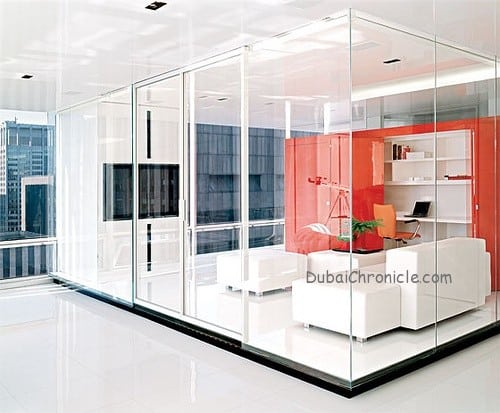
The momentum in office leasing activity that was noticeable in the first months of 2013 in Dubai has slowed in the third quarter of the year. Despite the improved market sentiment and stronger demand, the high level of supply continues to constrain the sector. Average headline quoting rents in quality office buildings in selected areas increased by 3% Q-o-Q in Q3 2013.
The top open-market rent* in the DIFC increased marginally to AED 2,610 per sq m while it improved to AED 1,830 per sq m elsewhere in the CBD. The most prime locations, such as Downtown and TECOM A & B, continue to attract most of the demand, despite the worsening congestion and the limited parking in these areas. DIFC has seen a good level of activity, from both new occupiers taking space and existing firms expanding. A lot of the DIFC activity originated from newly arrived European companies and existing law firms. The newer areas such as Business Bay, JLT, Jebel Ali, and Silicon Oasis continue to improve and are experiencing rental growth.
Prime rents in Business Bay have grown 28% Y-o-Y and 10% Q-o-Q and as the surrounding infrastructure continues to improve and the area is opening up. Rental growth is expected to be maintained despite the strata nature of the area, which makes it unpopular amongst larger occupiers.
Despite being also a strata location, JLT offers more affordable office space to companies seeking freezone premises. Prime rents in JLT best quality buildings have seen a rise of 75% Y-o-Y and 14% Q-o-Q, while the other buildings are also recording growth in their rental values. Jebel Ali has also been filling up quickly and rental values in both its freezone and onshore parts have been on the rise. Rental values have picked up in Barsha too as the area saw some activity from smaller occupiers.
Rents in prime locations and some emerging new areas were supported by improved confidence and healthy demand. However, the strong supply pipeline continue to apply a breaking impact on rental growth.
The total office stock within areas monitored by JLL is estimated at 7.2 million sq m at the end of Q3 2013. Around 45,000 sq m of office space entered the market in the last quarter, with the major completions being “48 Burj Gate” on Sheikh Zayed Road and the API Trio Tower in Al Barsha.
According to developers, around 245,000 sq m will be delivered in the last quarter of the year. However, much of the announced new supply might be postponed to 2014 and beyond.
As of Q3 2013, the CBD (ie DIFC, Burj Downtown and SZR) represents less than 20% of the existing stock while areas such as Business Bay (14%) and JLT (13.5%) are accounting for larger proportions of the current office space.
Around 1.2 million sq m of office space is expected to enter the market by 2016, reflecting the strong supply pipeline. However, as the delivery of this extra space may further exacerbate the current supply-demand imbalance, some of the proposed projects might be delayed.
Business Bay accounts for the majority of the future supply. The area is expected to see an additional 713,000 sq m of office space by 2016 (equivalent to 58% of the total upcoming supply) including towers such as The Burlington, Bay View, Bay Gate and Tamani Art offices. Other locations that will see new office supply are JLT (10%), Dubai World Central (7%), Dubai Investment Park (6%), the Greens (5%) and DTCD (4%).
Office demand
The improvement in the Dubai economy has resulted in an increased demand for office space. However, the recovery in demand remains counter -balanced by the high level of supply entering the market.
Demand remains focused on high quality space in prime locations such as SZR, Downtown and TECOM A & B.
“Flight to quality” continues to be noticeable with further relocations taking place from the older and secondary areas towards the prime and newer locations.
The market continues to suffer from a shortage of large units of high quality office space suitable for global occupiers
“Built-to-suit” options are therefore still being considered, especially by large occupiers in search of 5,000 sq m of office space or more.
Large companies are also becoming increasingly sensitive to sustainability issues and there has been an increasing demand for LEED certified buildings with some corporates mandating this for all future officespace.
Other factors influencing occupiers‟ choice include: congestion and traffic; availability of parking space; roximity to a metro station.
Single ownership buildings continue to account for the majority of the existing supply and most of the current demand; while strata projects remain less popular, especially amongst large global companies. Despite being growing commercial locations, many buildings in Business Bay and JLT will not appeal to some occupiers due to their strata status.
Landlords are becoming more bullish in the most prime locations, being less flexible on rents and reducing rent-free periods. Landlords in secondary locations remain flexible in order to attract tenants and to fill their buildings.
Vacancy rates within the CBD remained high at around 30% as the take up remains counterbalanced by the new supply entering the market.




































